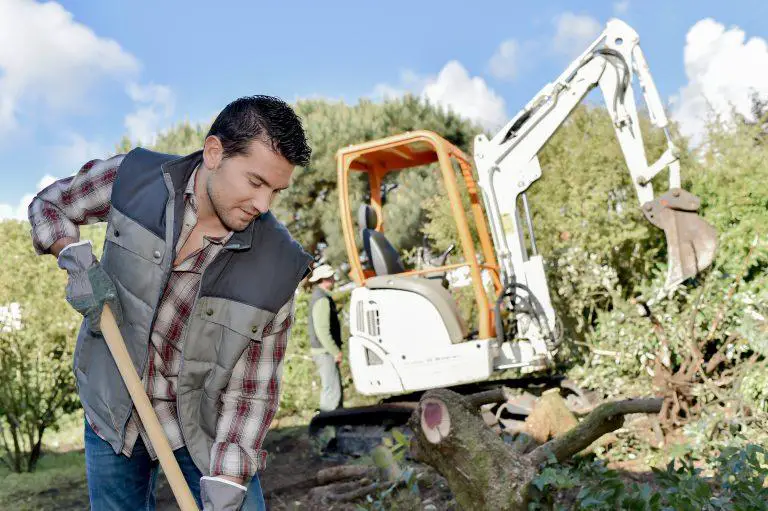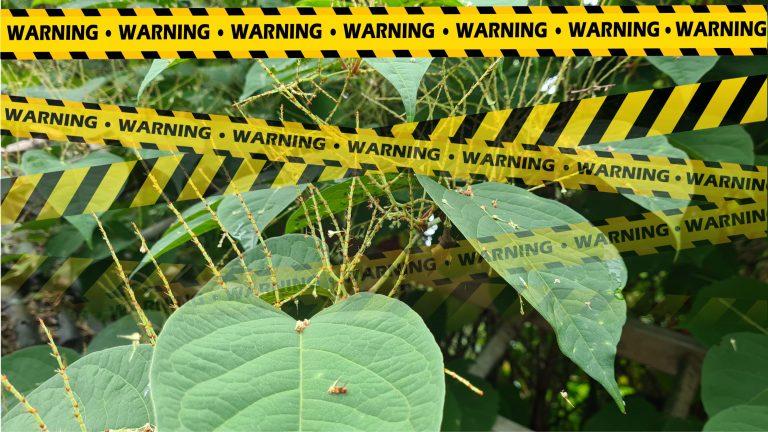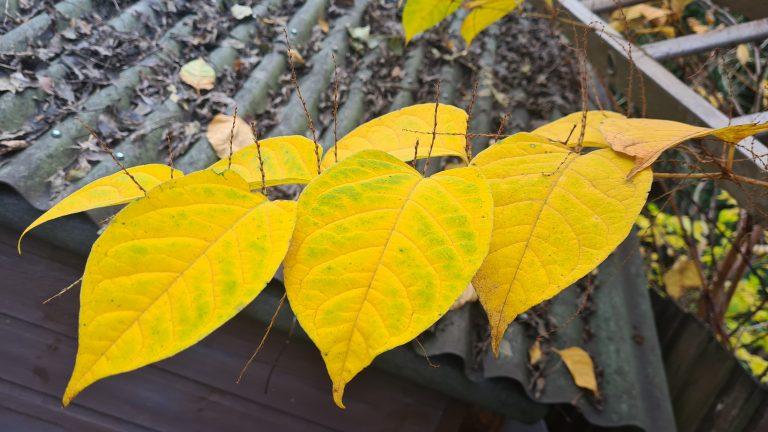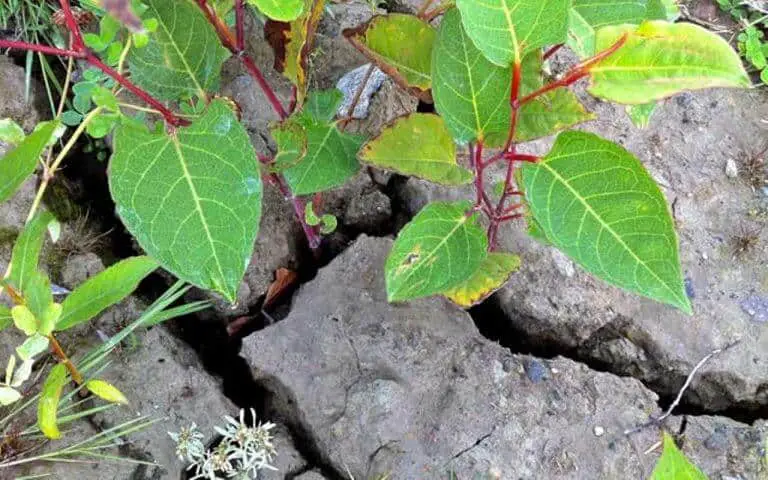Japanese knotweed is a highly invasive plant that can spread quickly and cause significant damage to property. It has been called the most destructive plant in Britain, costing £170 million per year to remove.
In order to stop this weed from spreading, you need to know methods to control Japanese knotweed with methods that are effective but also safe for your environment.
Our 5-step method will help you get rid of Japanese knotweed permanently while keeping your lawn healthy and beautiful.
The following approaches provide many possibilities for on-site and off-site management/eradication of Japanese knotweed plants and knotweed-infested soil.
The techniques are based on Integrated Pest Management (IPM), which uses mechanical, cultural, biological, and chemical ways to combat infestations.
Best methods to eradicate Japanese knotweed
There are several methods you can use when trying to eradicate Japanese knotweed from your property or garden area including mechanical removal (digging), chemical treatment (herbicides), biological control agents such as insects or fungi, and lastly genetic engineering solutions which are still in development.
Mechanical removal
Mechanical removal is the most common and straightforward way to get rid of Japanese knotweed. Simply dig it up by hand or use a mechanical digger to remove as much of the plant material as possible. Be sure to dispose of it properly, as leaving it lying around can spread the weed further.
Hand pulling or digging should be limited to new populations that arrived with Japanese knotweed propagules in the soil or small juvenile populations with only a few stalks. The removal of new occurrences in building sites or work zones is simple.
It could take up to three years to assess whether the management was completely successful.
Cultural removal
Cultural control entails changing the environment to make it uninhabitable for the invasive plant to thrive. Unfortunately, because Japanese knotweed adapts well to a wide range of locations and situations, cultural restrictions are not an option. Japanese knotweed thrives on soils with pH ranges of 3.0 to 8.5, and it tolerates wet, dry, and dappled shade.
Controlled burning and grazing are likewise ineffective since they only impact the upper portion of the plant, leaving the rhizome system unaffected.
Smothering removal
If you don’t want to use herbicides, smothering is an excellent option. It not only eliminates the need for chemicals but also prevents soil disturbance and erosion.
The following are some general guidelines regarding smothering:
- Allow the knotweed to grow in the spring without attempting to control it;
- Cut the knotweed at the base and close to the ground around the first week of June (allowing for early rapid growth causes the plant to exhaust its stored carbohydrates, weakening the rhizome system);
- Pile all of the stems on an impervious surface such as a tarp, plastic, pavement, etc. to dry (after turning brown, the stems are no longer viable or a threat);
- Cover the chopped stems with a thick layer of mulch, grass clippings, or other material to prevent them from puncturing the tarp or plastic that will be put next.
- Use the largest heavy-duty dark-coloured tarp you can locate or large sheets of thick (7-mill or thicker) black plastic to cover the entire space. If you’re using more than one tarp or sheet of plastic, make sure there’s a 2′ overlap between them to keep the sun out. Also, ensure that the cover material reaches a few feet beyond the knotweed’s boundary in all directions.
- Secure the edges of the tarp/plastic with rocks, wood, soil, sand, mulch, and so on. Puncture the tarp/plastic to prevent knotweed stems from surviving. Patch any tears or holes that appear.
- If the tarp/plastic is unsightly, it can be covered with appealing bark mulch or other material. If it’s on a steep slope, some sort of anchoring will be needed to keep the mulch from slipping into the surface water, and it will also protect the plastic from UV photo-degradation.
- The covering material can be removed and the area replanted after 5 years.
Biological removal
Biological control is an emerging method of Japanese knotweed treatment that involves introducing insects or fungi to the environment around the plant in order to kill it. This method has had some success, but issues with numbers mean that this is still experimental at best so far. Read more about biological methods here. The two insects tested were Galerucella spp and Athalia rosae – details here.
Genetic Engineering has been trialled but is still very much in its infancy, as such not a lot of information is available about it at this time. Read more about this method here.
A study is being conducted to assess a psyllid, a leaf-eating bug brought from Japan. The psyllid was discovered on wild knotweed in Japan and is being tested for host specificity by the USDA.
Herbicide removal
Herbicides are the most popular way to remove Japanese knotweed. The key is the careful application of an effective herbicide at the right time of year but also using the best method for your circumstances. If you choose this method remember that it may come back, so long-term follow-up care or prevention will be required. Read more about this process here.
Because mowing/cutting alone will not eliminate and control Japanese knotweed, it should only be used in conjunction with pesticide sprays or smothering. Cutting the plant’s aboveground section frequently wakes up dormant lateral buds in the rhizome system.
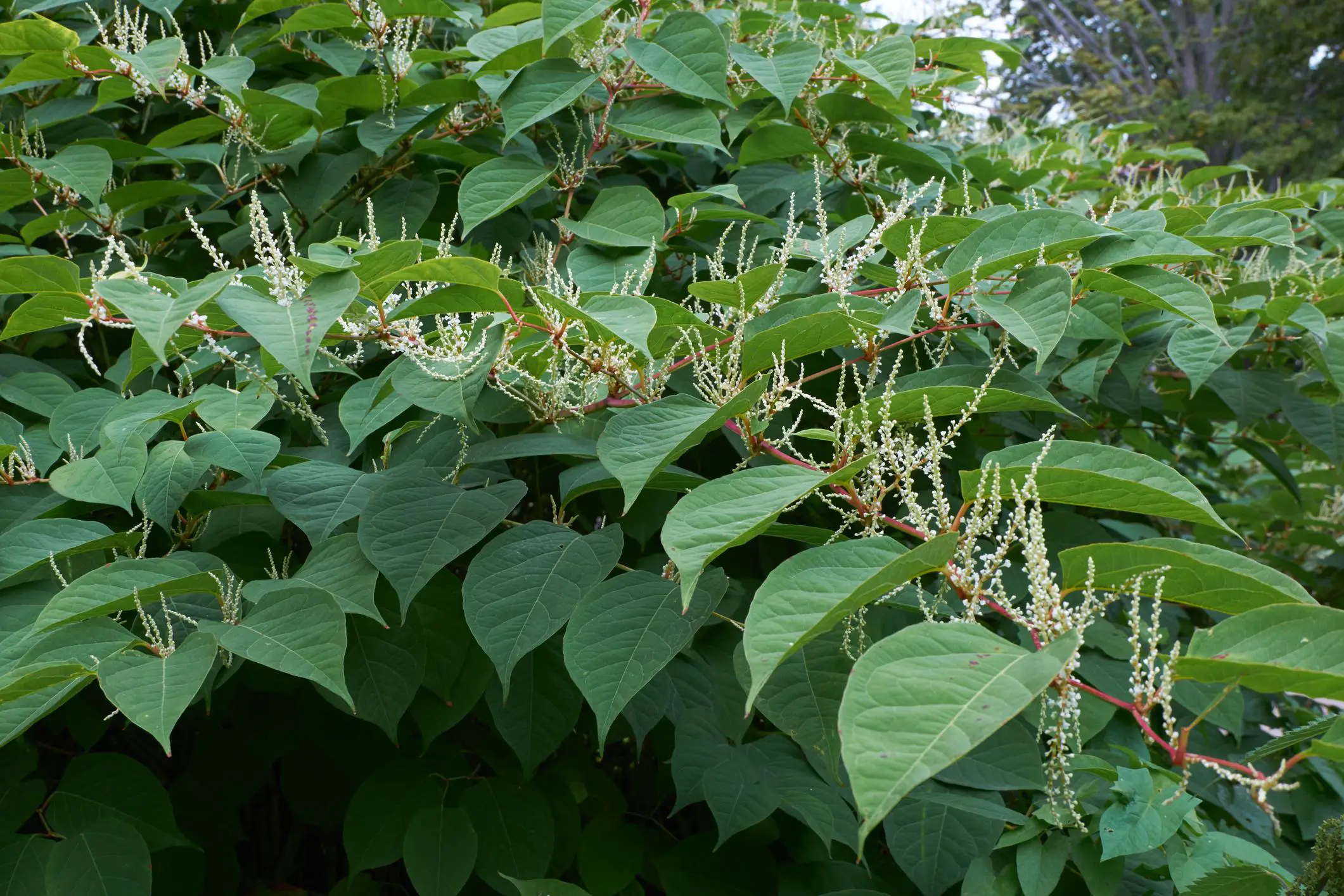
Chemical removal is by far the best method
Chemical control strategies will be much more effective if we understand Japanese knotweed physiology. In contrast to most plants, Japanese knotweed has a one-way flow of nutrients and carbs. During the growing season, nutrients/carbohydrates migrate upward until flowering, when the process reverses to transfer the nutrients/carbs back down to the rhizome system for overwintering.
As a result, the time for the application to coincide with the end of flowering and the first deadly frost (September–November). This considerably boosts the treatment’s efficacy (early-season applications will have little effect on the plant other than foliage burn). Another reason to wait until after flowering is to avoid stinging honeybees and other pollinators that are foraging.
The key to success in chemical control is knowing when to use what chemicals and when not to use them.
Cutting and removing the above-ground portion of the Japanese knotweed in early June, allowing the stalks to regrow before treatment, is one technique for increasing chemical control efficacy. Cutting the plant’s aboveground section stimulates regrowth automatically. This process depletes the rhizome system by requiring energy stored in the rhizome to be used for new shoot development.
As mentioned above, apply the chemical treatment. Pretreatment trimming has the extra benefit of making the shoots shorter at the time of treatment.
Knotweed can reach a height of 10 feet, although regrowth from cutting is typically half that height, making it easier to approach and ensure treatment coverage.
Herbicide use does not ensure total effectiveness, and repeat applications may be necessary for up to 3-5 years. Although 100 per cent control has been attained, the usual success rate after the first therapy is around 85 per cent. If any viable Japanese knotweed plants survive, they will thrive, spread, and repopulate the area within a few years.
Japanese knotweed has the potential to lie dormant for several years, so it could be lurking even if the site appears to be clear. It is suggested that long-term monitoring and management be carried out.
Disposal of Japanese knotweed
Burning/incinerating, burying (>5′ below ground), chipping, or sending to a landfill that accepts Japanese knotweed crowns and rhizomes are all options for disposing of Japanese knotweed crowns and rhizomes. Unless they’ve been killed by herbicides or heat treatments, they can’t be stored near wetlands or surface waters. Crowns and rhizomes should not be composted.
Japanese knotweed stalks that have turned brown can be composted. If the stems have been freshly cut, they may spread and must be dried before composting.
Because the stems of Japanese knotweed can take root in wetlands, surface waterways, and damp soil, they should never be disposed of there.
In conclusion
Methods to control Japanese knotweed
Invasive plants can spread quickly and cause a lot of damage, so it’s important to know how to deal with them before they get out of control.
Whichever method you choose, it’s important to remain vigilant and keep on top of any regrowth or new outbreaks. Doing so should help to ensure that Japanese knotweed does not take over your property or garden.
Remember, early detection is key to gaining control of this invasive weed.
Want to know more in order to control Japanese knotweed?
Knotweed Removal aims to provide the most up-to-date information, help and advice for YOU to make informed decisions. If you are unsure or uncertain about how to proceed, please reach out to us and we will gladly come back and advise you as best we can.
Governmental advice can be found here and the UK law covering the removal of Japanese Knotweed as stated under the Wildlife and Countryside Act 1981 can be found here.
The best means to contact us is via our email – hello@knotweedremoval.tips
Do not forget we have a library of blogs covering many areas relevant to Japanese Knotweed, our free downloadable How-to Guides and Product Reviews on the latest methods being employed to eradicate or remove Japanese Knotweed.
Knotweed Removal, UK

